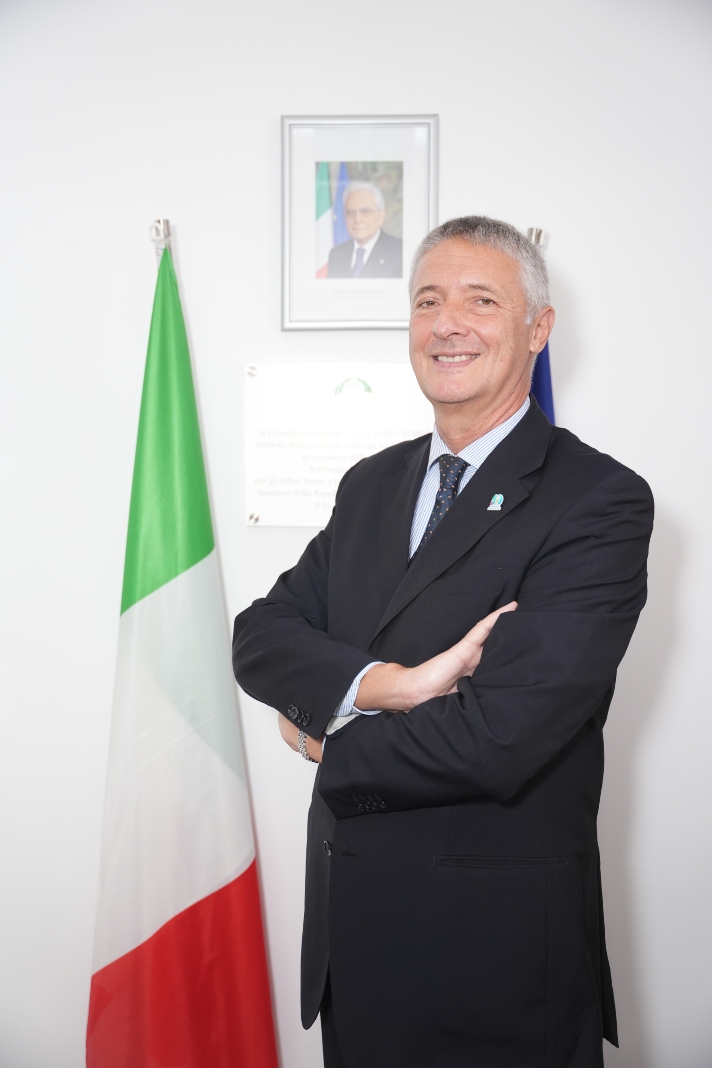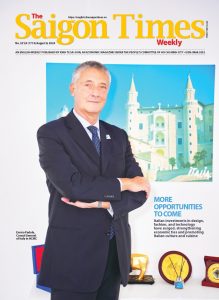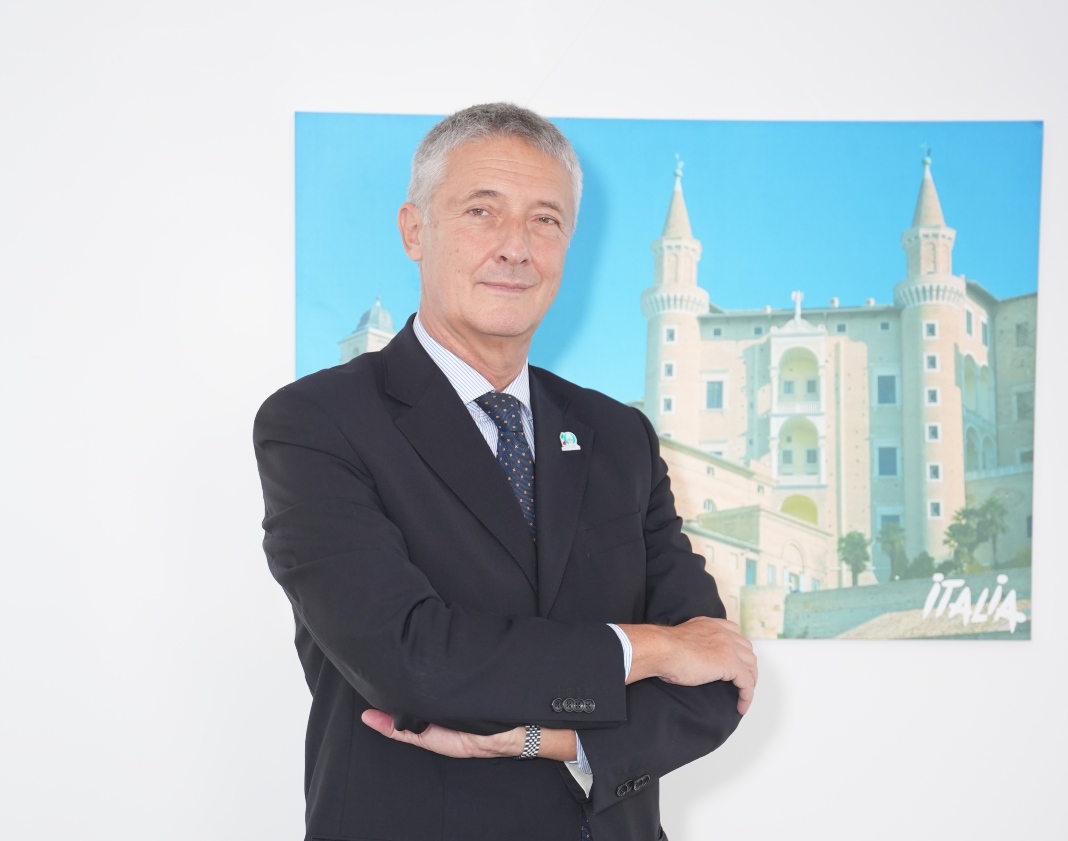Italian investments in design, fashion, and technology have surged, strengthening economic ties and promoting Italian culture and cuisine. In an interview with The Saigon Times, Enrico Padula, Consul General of Italy in HCMC, highlights significant strides in the bilateral relationship between Italy and Vietnam over the past decade.
The Saigon Times: Reflecting on the past 10 years, what are the key achievements in the bilateral relationship between Italy and HCMC that the Consulate is particularly proud of? How have these milestones shaped the current cooperation trajectory?
Enrico Padula: The first 10 years of the Italian Consulate General in HCMC have been very active. Despite the brief interruption caused by the pandemic, the relationship between Italy and the central and southern provinces of Vietnam has grown significantly. There has been an increasing presence of Italian businesses and investments, and stronger cooperation between the Vietnamese and Italian economies, which have found many areas and ways for joint ventures.
The Consulate, along with the Italian Trade Commission and the Italian Chamber of Commerce in Vietnam, has played a crucial role in supporting and advising while constantly promoting the Italian brand as a symbol of excellence, quality, reliability, and sustainability. Key areas where the Consulate General has made a difference include cooperation in the field of design, fostering a fruitful relationship between Italian and Vietnamese design communities. There has also been significant technological exchange in the textile and leather sectors, and creativity in the fashion industry has led to new interactions. Additionally, there has been a growing appreciation for Italian food products, particularly wine, among the Vietnamese public.
Regarding the economic relationship between Italy and HCMC, where do you see the most promising opportunities for future economic collaboration?
The economic relationship between Italy and Vietnam has significantly evolved over the past decade. Previously, investments and cooperation were primarily driven by the lower labor costs in Vietnam, although the potential growth of the local and regional markets was also a factor. Today, Vietnam’s technological skills are an additional attractive factor for new collaborations between Italian and Vietnamese firms. This shift reflects a more balanced and mature relationship between the two economies, offering promising opportunities for future economic collaboration in areas such as technology, manufacturing, and innovation.
When it comes to Italy, many people think of design, fashion, and cuisine sectors. How about other investment sectors? Are there any activities already underway in the Vietnam market, especially in HCMC?
While Italy is indeed renowned for its design, fashion, and cuisine, the Italian economy has several other dynamic sectors that are less well-known but equally important. Italy’s resilience, specialized industries, and recent economic growth highlight its potential as a model of sustainable development, balancing growth, technological innovation, quality of life, and environmental respect.
Italy is a global leader in manufacturing, agriculture, and tourism, with one of the highest trade surpluses worldwide. This is not only due to traditional “Made in Italy” products like fashion, food, wine, furniture, and ceramic tiles but also includes medium/high and high technology sectors such as mechanical engineering, shipbuilding, motor yachts, aerospace, sports cars, and pharmaceuticals.
Even though Italy has fewer large industrial groups compared to other advanced economies, it is a strong exporter thanks to its dynamic and innovative network of medium-sized and large companies that are active in global markets. For example, in 2023, Italy was the fifth-largest economy in terms of total merchandise exports, with a 48% growth in exports over the past 10 years—one of the best performances globally. During this period, Italy’s productivity grew by over 10%, outpacing nearly all other European economies. The manufacturing sector also saw positive trends in employment, up 3.5%, and added value, up 14.7%.

What cultural differences have you observed between Italians and Vietnamese? How has the Consulate worked to bridge these gaps and foster greater mutual understanding and interaction?
Bridging cultural differences is a key priority for the Consulate General, not with the aim of homogenization, but rather to foster a deeper appreciation of our respective cultural distinctions. Despite the geographical distance between Italy and Vietnam, there are significant cultural similarities between Italians and Vietnamese. One important avenue for bridging these differences is through cooperation between universities and educational exchanges. Italy offers a first-class higher education system, reasonable fees, and a culturally rich environment, providing Vietnamese students with unique opportunities to study in Italy.
Beyond the official government-to-government ties, how has the Consulate engaged with the broader community in HCMC? Are there any sectors or areas of collaboration between Italy and HCMC that you believe have untapped potential?
Our main goal is to promote Italy in HCMC and Vietnam at large through an integrated approach, where economic, trade, cultural, and scientific promotion complement each other. The Consulate General has supported a wide range of events, including concerts, exhibitions, conferences, and film screenings, which have been warmly received by the Vietnamese public. There is certainly untapped potential in all areas of cooperation. The more we explore and understand each other’s countries and societies, the more opportunities for collaboration emerge.
With the signing of the EVFTA and the upcoming EVIPA between Vietnam and the European Union, what impact do you see on trade and investment ties, particularly between HCMC and Italian companies? How can these agreements be leveraged to further strengthen economic cooperation?
 The EVFTA (EU-Vietnam Free Trade Agreement) presents substantial opportunities to enhance trade and support economic growth and job creation in both the European Union and Vietnam. This will be achieved through the removal of tariffs, reduction of regulatory barriers and red tape, protection of geographical indications, opening of services and public procurement markets, and ensuring enforceable rules. The successful implementation and speed of these agreements are crucial to ensuring mutual benefits and balanced trade growth between the EU and Vietnam. Italian companies, like other EU businesses, will base their investment decisions on the fair and timely implementation of the EVFTA.
The EVFTA (EU-Vietnam Free Trade Agreement) presents substantial opportunities to enhance trade and support economic growth and job creation in both the European Union and Vietnam. This will be achieved through the removal of tariffs, reduction of regulatory barriers and red tape, protection of geographical indications, opening of services and public procurement markets, and ensuring enforceable rules. The successful implementation and speed of these agreements are crucial to ensuring mutual benefits and balanced trade growth between the EU and Vietnam. Italian companies, like other EU businesses, will base their investment decisions on the fair and timely implementation of the EVFTA.
Looking ahead, what are the Consulate’s top priorities for further strengthening the relationship between Italy and HCMC? What are your personal hopes and aspirations for the future of the relationship?
The Consulate General’s top priority is the integrated promotion of economic, cultural, and scientific ties between Italy, its regions, and HCMC. Key areas for developing interesting cooperation include heritage preservation, sustainable tourism management, and urban planning that incorporates green and circular economy principles. Italian technology and expertise can be effectively applied in Vietnam, fostering the development of new policies. Additionally, we will continue to focus on promoting Italian technology in traditional sectors such as industrial machinery, agro-processing, and pharmaceuticals.
Reported by The Ky









